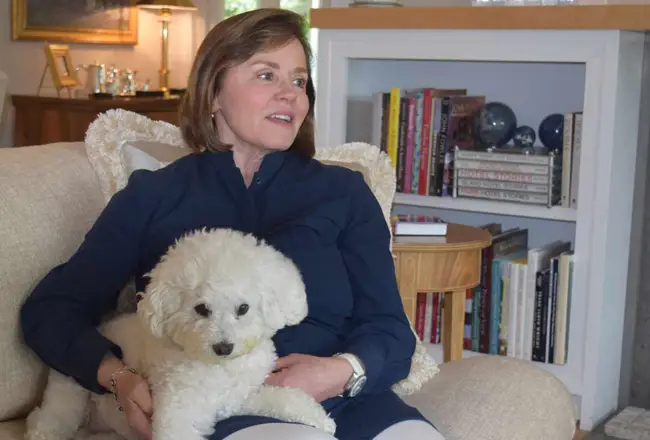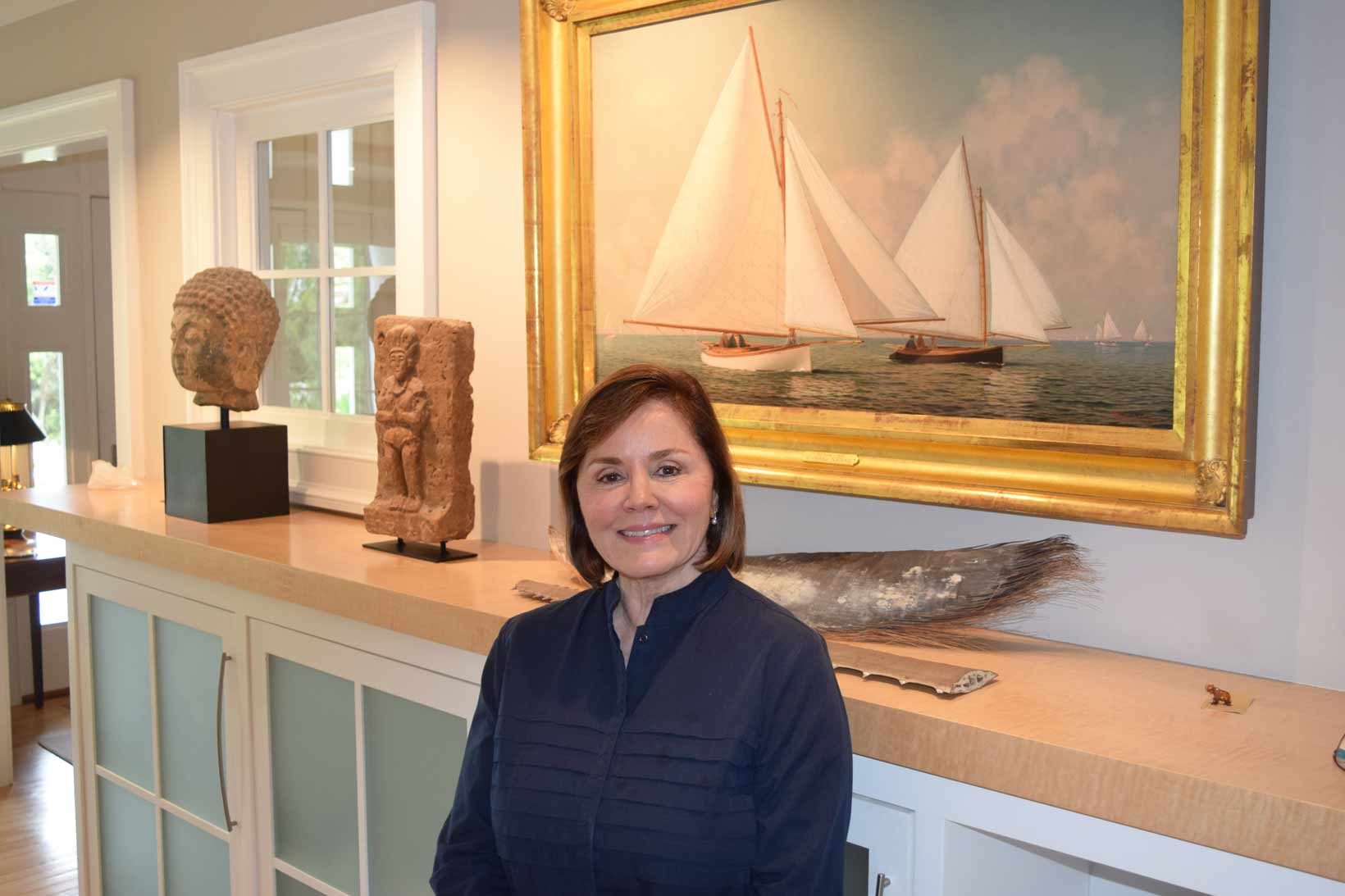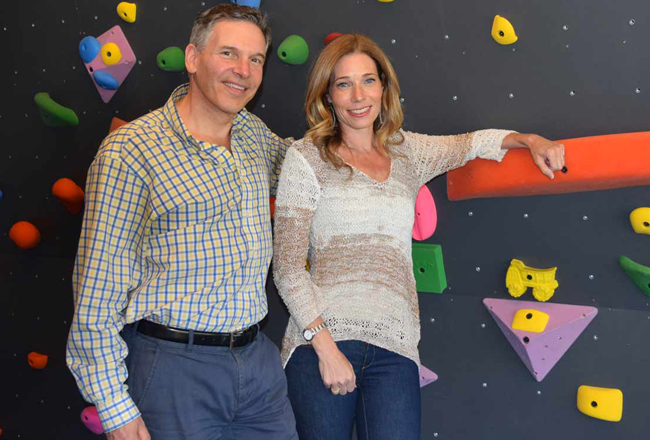
Trudy Dujardin has been in the forefront of green and sustainable interior design for three decades, though she occasionally cringes when reminded of her longevity in this field.
“Books that are written about sustainable design and green interior design list me as a pioneer, which makes me sound like a dinosaur,” she said with a laugh.
Dujardin, who is a LEED Professional with a specialty in interior design and construction, has built her award-winning reputation as the head of Dujardin Design Associates Inc., with offices in Westport and Nantucket. Her 2014 book “Comfort Zone: Creating the Eco-Elegant Interior” is widely regarded as being among the finest works of that genre. Her latest venture is Dujardin Design Green Consulting, which focuses exclusively on this element of her professional passion.
In this edition of Suite Talk, Business Journal reporter Phil Hall visited with Dujardin at her Norwalk home to discuss her work in sustainable and green interior design.
How did you first get involved in sustainable and green design?
“In 1987, my former husband and I bought a piece of property on the harbor in Nantucket. My former husband was a severe asthmatic and the simple fluffing of a pillow could send him into an asthma attack, so I had to learn what was causing all of this. I began doing a lot of research on the environmental impacts on health. With the property on the harbor, I vowed that I would do that project the right way.”
What was the market like back in the late 1980s for sustainable and green design?
“Back then, the products weren”™t available. You couldn”™t go to Home Depot and find a nontoxic product. So, I had to hire the floor refinisher who had done Gracie Mansion because I heard about this man who created his own floor finish. He came up and we created a stain that you could actually drink the product. But I had to source these people and bring them to the island.
“Also, in the midst of all of this ”” probably the mid to late 1990s ”” I developed a condition called multiple chemical sensitivity, and it took them a long time to figure out what was making me so sick. That was the result of too many years on construction sites and not having the sense to wear a mask. It took two years of chelation therapy ”” it”™s almost like a chemotherapy ”” to flush out those chemicals from my body.
“So, after all of the research for building this house in Nantucket, I got to live in it and that”™s where I became well. I avoided construction sites where they were using medium-density fiberboards that were loaded with formaldehyde. And if they are painting with oil paints, I don”™t go on the job sites anymore.”
Is it safe to say that our health is being impaired by the spaces we occupy?
“We”™re in cubicles all of the time. We are either in a cubicle at work, or a car, or a house, or in a school, or in a doctor”™s office, or in an airport terminal ”” we used to be in phone booths. The indoor air quality of those spaces should be supporting your health and well-being, and as a designer I think it is flawed and we flunked the test.”
But is it true that a green-focused interior design costs much more money?
“That”™s a myth. Maybe back in 1987 it was. Now, you can go to any hardware store and get no-VOC paints or low-VOC floor finishes.
“Also, I wrote the book ”˜Comfort Zone”™ because most people have a misguided perception that to have a healthy home it has to look like a Birkenstock sandal. They don”™t know you can have beautiful high-end design, so I wrote that to educate them. I wanted to get across the concept of eco-elegance.”
Are you mostly focused on residential or commercial design?
“I used to do commercial, but I love the personal interaction with the residential. And 99% of my clients become best friends. Especially when it is new construction or renovation, we”™re with them for two-plus years.”
What are your residential clients looking for in your work?
“It”™s a mixed bag. The younger ones that have kids come to me because they want the health aspect. The old guard mostly come for the design, because Dujardin Design has won so many awards for straight design work. And then I kind of, under the radar, educate them about the healthier products and how to select things.
“Think about it: the largest organ on our body is the skin, and in a home the largest surface area covers the ceiling, walls and floors. If you get those covered with no-VOC products, you are more than 50% of the way home. But you can”™t just bring in a lot of lacquered furniture. The reason I have a lot of glass and steel furniture is because they”™re inert ”” they don”™t off-gas.”
 Your home is beautifully furnished. What are the eco-friendly elements of the furniture?
Your home is beautifully furnished. What are the eco-friendly elements of the furniture?
“The fabrics have no finish on them, no flame retardants or soil repellents, so they”™re not embedded with chemicals. They are silk, cotton, wool ”“ natural fibers. And even with the stuffing, we were careful not to have foam.”
You also have a surplus amount of natural illumination coming in through the windows.
“We call it daylighting in LEED. Most people feel better when they have a lot of natural light. I used to work in an office cubicle and I never saw outside ”” and you don”™t realize how it is eating away at your psyche, but it does and it brings you down. But the problem with daylighting is that you have to be careful with control of the heat and insulation in the winter. We have special glass in the windows for that.”
How can people get started on educating themselves about this subject?
“I just launched the new Green Consulting because so many people have said to me, ”˜Trudy, I would like to work with you to make my house healthier.”™ We can do an hour consultation or a half-day, or take on a big project and be on it for a year or two. But in the book ”˜Comfort Zone,”™ there are two pages called Green Resources and it took me 25 years to vet all of those resources.”





















